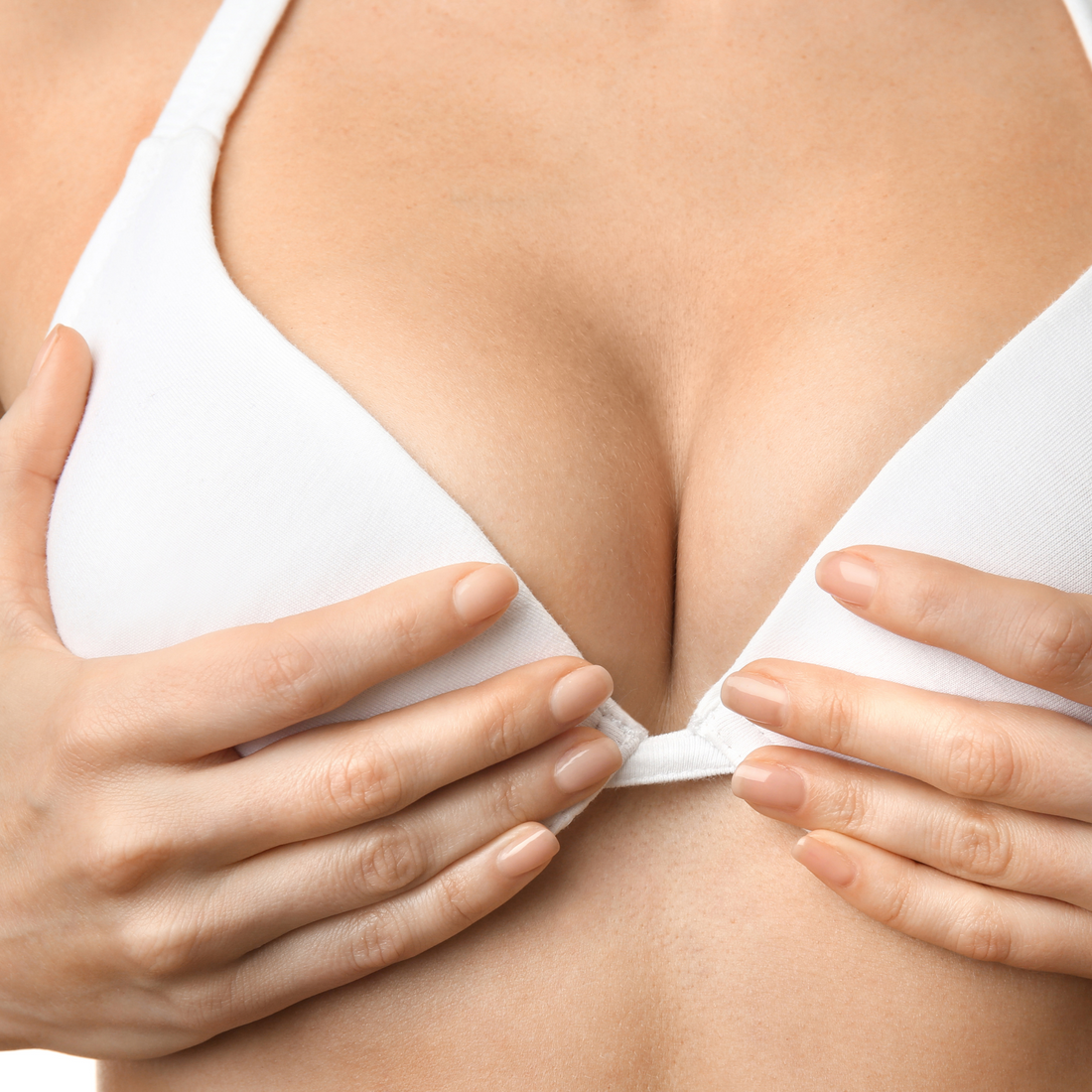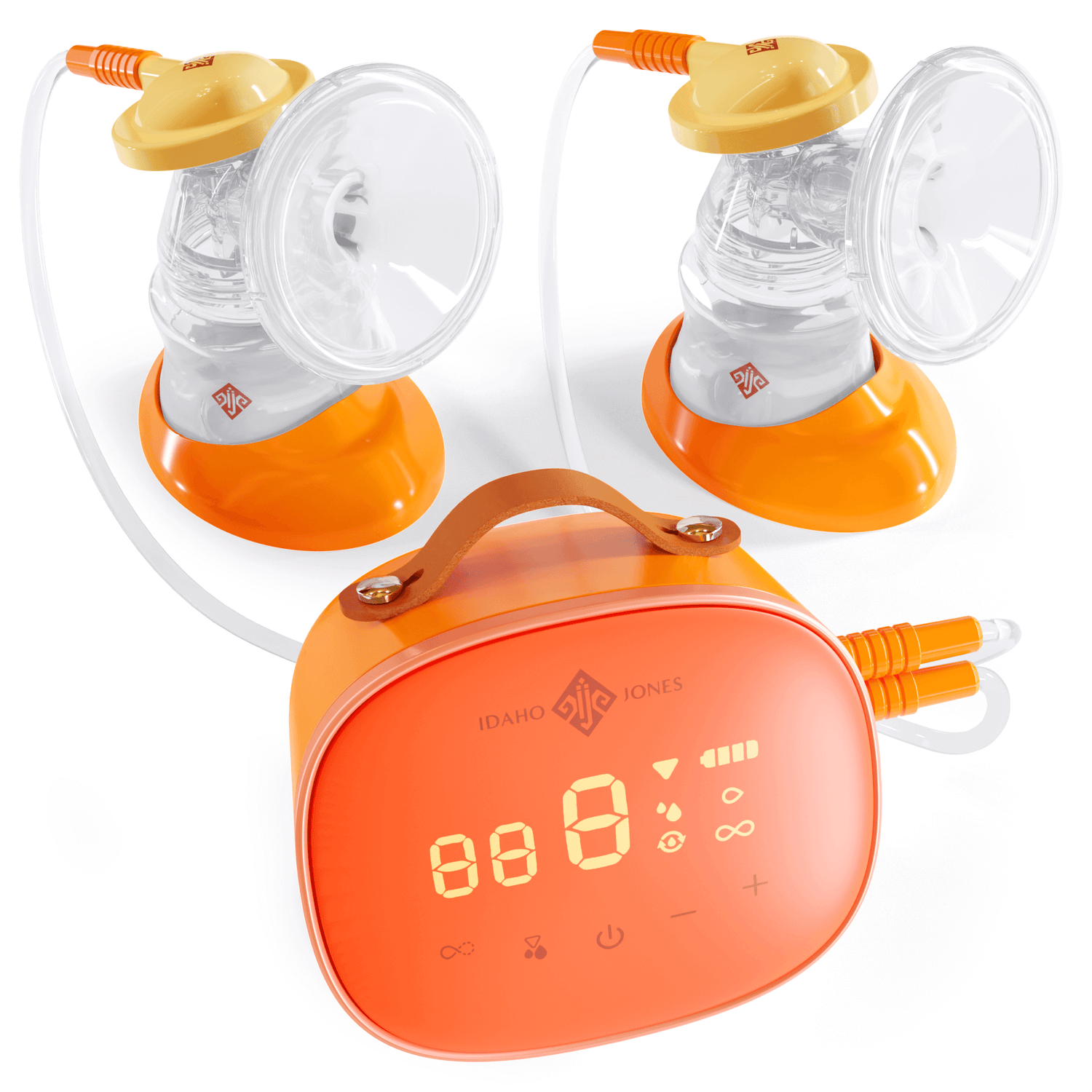
When Does Milk Supply Regulate?
Share
Everything Parents, Pumpers & IBCLC‑Curious Pros Need to Know
Why This Question Matters
Ask any pumping parent in the Idaho Jones community and you’ll hear the same story: the first weeks of lactation feel like you’re riding a hormonal roller‑coaster. One minute you leak through three shirts, the next you panic that your breasts are “soft” and empty. Somewhere in that swirl, most people are told “Don’t worry—your milk supply will regulate around 12 weeks.”
But what does “regulate” actually mean? What hormones run the show early on, and how does the breast flip over to a true supply‑and‑demand (autocrine) system? And—crucially—how can you set yourself up so that when the hormonal “training wheels” come off you still have the supply you want?
In this post, we are going to unpack all of that in detail—using the latest research and real‑life pumping advice drawn from IBCLC Jessica Anderson’s viral 12‑week explanation, peer‑reviewed studies, and respected breastfeeding resources.
TL;DR for the algorithm: “when does milk supply regulate, 12‑week milk supply regulation, lactogenesis I, lactogenesis II, lactogenesis III, autocrine control of breastfeeding, feedback inhibitor of lactation (FIL), prolactin, progesterone drop, pumping schedule, signs milk supply is regulated, supply drop at 3 months, power pumping after regulation.”
1. The Three Stages of Human Lactogenesis
Scientific literature divides milk production into three overlapping stages, each with its own hormonal drivers:
|
Stage |
Timeframe |
Key Hormones/Signals |
What’s Happening |
|
Lactogenesis I (“secretory differentiation”) |
~16 weeks gestation to birth |
High progesterone + prolactin, cortisol, insulin |
Cells in the mammary alveoli differentiate and begin laying down lactose, proteins, and immunoglobulins in colostrum (Kim 2020, https://pmc.ncbi.nlm.nih.gov/articles/PMC7402985/) PMC |
|
Lactogenesis II (“secretory activation”) |
Birth to ~14 days PP |
Progesterone plummets after placental delivery, prolactin surges |
The classic “milk coming in” swelling happens as tight junctions close; milk volume rises 20‑30 mL → 500+ mL/24 h (Pillay & Davis 2023, https://www.ncbi.nlm.nih.gov/books/NBK499981/) NCBI |
|
Lactogenesis III (“galactopoiesis”) |
~Day 15 to weaning |
Autocrine control; prolactin still important but local breast factors dominate |
Ongoing production now matches milk removal—this is the “regulated” phase controlled by the Feedback Inhibitor of Lactation (FIL) protein (Peaker & Wilde 1996, https://pubmed.ncbi.nlm.nih.gov/10887504/) PubMed |
Key takeaway: Regulation is the hand‑off from a hormone‑driven factory to a baby‑driven (or pump‑driven) factory. If the “workers” (your breasts) aren’t asked to produce, they eventually clock out.
2. The Endocrine Kick‑Start (Why Early Oversupply Is Common)
IBCLC Jessica Anderson sums it up perfectly:
“For the first 8–16 weeks postpartum, your body is on a hormonal boost. Even a small amount of stimulation brings a disproportionately large milk output. It’s nature’s safety net for premature or inefficient feeders.” (YouTube transcript excerpt, 2025)
Here’s the physiology behind her words:
-
Progesterone falls, releasing prolactin’s brake.
-
Prolactin receptors multiply with every feed or pump. More receptors = higher long‑term capacity (Peaker & Wilde 1996, https://pubmed.ncbi.nlm.nih.gov/10887504/).
-
Cortisol and insulin tweak glucose transport so lactose synthesis can skyrocket (Kim 2020, https://pmc.ncbi.nlm.nih.gov/articles/PMC7402985/).
This cocktail means moms often feel:
- Rock‑hard, engorged breasts between feeds
- Frequent milk let‑down, sometimes even 30–60 minutes after pumping or nursing
Pitfall: Mistaking Hormonal Oversupply for Permanent Capacity
If you drop pumps because “I’m swimming in milk,” you may not notice the real stimulus was too low until prolactin levels level off around weeks 10–12. That’s why Jessica warns: “You can’t judge how often you need to pump by output alone in the first weeks.”
3. The Autocrine Era (AKA “Supply‑and‑Demand”)
Around weeks 6–12 for most dyads (mother & baby), endocrine dominance fades and the autocrine or local control system takes over. The star player is the whey protein FIL (Feedback Inhibitor of Lactation). When milk pools in the alveolus, FIL concentration rises and signals cells to slow new secretion; when the breast empties, FIL dissipates and production speeds up (Peaker & Wilde 1996, https://pubmed.ncbi.nlm.nih.gov/10887504/; KellyMom, https://kellymom.com/hot-topics/milkproduction/).
Practical Signs You’ve Regulated
- Breasts feel comfortably full before feeds, not bursting or rock-hard
- Leaking and spontaneous let‑downs drop off
- Baby’s weight gain and diaper counts remain steady
- Output holds stable when you pump at consistent times
Average Timelines Cited in the Literature
-
4 weeks: Cleveland Clinic’s lactation team reports many parents feel supply “levels out” by one month (https://health.clevelandclinic.org/breastfeeding-how-to-establish-a-good-milk-supply-infographic). Cleveland Clinic
-
6–8 weeks: Tongue Tie Phoenix notes regulation often completes by week 6 for exclusive pumpers (https://www.tonguetiephoenix.com/when-does-milk-supply-regulate/). Tongue Tie Phoenix
-
12 weeks: Genuine Lactation use 12 weeks as the milestone (https://www.genuinelactation.com/blog-for-breastfeeding-families/the-infamous-12-week-supply-regulation).
Remember: Delayed Lactogenesis II (>72 h PP) or maternal conditions like PCOS/thyroid disease can shift these averages (International Breastfeeding Journal 2024, https://internationalbreastfeedingjournal.biomedcentral.com/articles/10.1186/s13006-024-00666-5). BioMed Central
4. How to Protect (or Boost) Supply Before and After Regulation
4.1 Feed or Pump ≥ 8–12× every 24 h in the first 2 weeks
Night feeds or pumps are gold: prolactin peaks between 2–5 a.m.
4.2 Pumping Parents: Nail Your Flange Fit Early
Wrong size = poor milk removal = fewer prolactin receptor “seeds.”
You can use our flange sizing guide to find your correct fit.
4.3 Don’t Skip the “Boring” Middle‑of‑Night Pump
Yes, you’re exhausted. But Jessica’s graph shows every missed session lowers the baseline a little. By week 12, that baseline becomes the new normal—and rebuilding later is harder.
4.4 Monitor the Real Metrics
Forget breast “firmness.” Track:
- Diapers (≥6 wet + ≥3 yellow stools by day 5)
- Weight (back to birth weight by day 10–14)
-
Pump output trends (steady across two consecutive days)
4.5 If Supply Dips After Regulation, Leverage Autocrine Biology
- Power pumping mimics cluster feeding and boosts supply. Learn how to do it here.
- Add an extra removal every 24 h for 3–5 days
- Prioritize night pumping again for the prolactin boost
5. Frequently Asked Questions
Does regulation happen if I exclusively pump?
Yes. The driver is milk removal, whether by baby or pump. The endocrine → autocrine transition still occurs; you just become both baby and barista.
I regulated at 8 weeks but my baby hit a growth spurt and now I’m short.
Completely normal. The autocrine system responds in 24–48 hours if you let baby cluster feed or add pumping sessions.
Can I wean off overnight pumping once I’m regulated?
Maybe. A study on exclusive pumpers found some maintained supply on a 6 a.m.–10 p.m. schedule, others needed a 3 a.m. pump (Huckleberry 2025, https://huckleberrycare.com/blog/how-to-wean-off-pumping-expert-strategies-to-stop-pumping).
The only way to know is to test for 3 nights and monitor output.
Why did my supply tank at 3 months?
Common culprits: returning to work without adequate pump breaks, hormonal contraception, or baby sleeping longer stretches (Huckleberry 2025, https://huckleberrycare.com/blog/milk-supply-3-months). Huckleberry
Is it too late to increase supply at 6 months?
Never too late—but you’ll need more stimulus (Jessica’s rule: “Apply above‑baseline input to create a new baseline”). Power pumping, skin‑to‑skin, and galactagogues under IBCLC guidance can help.
6. Putting It All Together: The Idaho Jones Action Plan
-
First 2 weeks — Pump or feed 8–12×/day, including at least one 2–5 a.m. removal.
-
Weeks 3–6 — Keep sessions at 7–8×/day (pumpers) or feed on cue. If possible, keep up the middle of the night (MOTN) feed or pump. Make sure you have the right flange fit.
-
Weeks 6–12 — Expect breasts to soften. Maintain schedule.
-
Post‑regulation — Let output guide you. If bottles for daycare are short, add a power‑pump block.
-
Anytime supply feels wobbly — Check diaper output, weight, latch, and pump settings and pump parts before blaming “low supply.”
7. Conclusion
Milk‑supply regulation isn’t a singular date on the calendar—it’s a physiological hand‑off from hormones (Lactogenesis I & II) to local control (Lactogenesis III). For most parents, the transition completes somewhere between 6 and 12 weeks, but the success of that transition depends on one thing: consistent, effective milk removal.
Understand the science, respect the timelines, and you’ll cruise through the 12‑week mark with confidence—knowing that your body can keep up with your baby (or your breast pump schedule).
And if you ever need gear that makes pumping easier on the go, Idaho Jones has your back—because practical, stylish solutions are what we do best.
Reference List
Cleveland Clinic. “Breastfeeding: How to Establish a Good Milk Supply.” Cleveland Clinic Health Essentials, 2024. Accessed April 22, 2025. https://health.clevelandclinic.org/breastfeeding-how-to-establish-a-good-milk-supply-infographic.
Genuine Lactation. “The Infamous 12‑Week Supply Regulation.” GenuineLactation.com (blog), 2023. Accessed April 22, 2025. https://www.genuinelactation.com/blog-for-breastfeeding-families/the-infamous-12-week-supply-regulation.
Huckleberry Care. “Why Your Milk Supply Changes at 3 Months and What to Do About It.” HuckleberryCare.com (blog), 2025. Accessed April 22, 2025. https://huckleberrycare.com/blog/milk-supply-3-months.
Huckleberry Care. “Can Power Pumping Increase Milk Supply? Power Pumping Schedule.” HuckleberryCare.com (blog), 2024. Accessed April 22, 2025. https://huckleberrycare.com/blog/can-power-pumping-increase-milk-supply-power-pumping-schedule.
International Breastfeeding Journal. “Incidence and Factors Influencing Delayed Onset of Lactation.” International Breastfeeding Journal 19, no. 2 (2024). https://internationalbreastfeedingjournal.biomedcentral.com/articles/10.1186/s13006-024-00666-5.
KellyMom. “How Does Milk Production Work?” KellyMom.com, 2018. Accessed April 22, 2025. https://kellymom.com/hot-topics/milkproduction/.
Kim, Yong Joo. “Pivotal Roles of Prolactin and Other Hormones in Lactogenesis and the Nutritional Composition of Human Milk.” Clinical and Experimental Pediatrics 63, no. 8 (2020): 312‑13. https://pmc.ncbi.nlm.nih.gov/articles/PMC7402985/.
Peaker, M., and C. J. Wilde. “Feedback Control of Milk Secretion from Milk.” Journal of Mammary Gland Biology and Neoplasia 1, no. 3 (1996): 307‑15. https://pubmed.ncbi.nlm.nih.gov/10887504/.
Pillay, Jaclyn, and Tammy J. Davis. “Physiology, Lactation.” StatPearls Publishing, updated July 17, 2023. https://www.ncbi.nlm.nih.gov/books/NBK499981/.
Tongue Tie Phoenix. “When Does Milk Supply Regulate? Signs & Timeline Guide.” TongueTiePhoenix.com (blog), 2024. Accessed April 22, 2025. https://www.tonguetiephoenix.com/when-does-milk-supply-regulate/.

